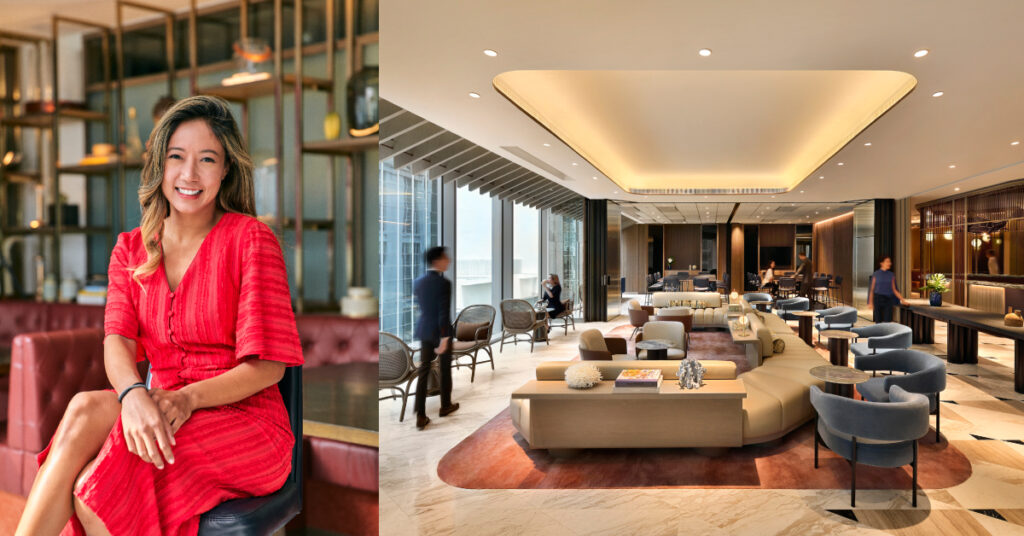
Founded in 2016, The Great Room now operates seven locations in Singapore & has expanded to Australia, Hong Kong, and Thailand
Once touted as the future of work, coworking has lost much of its early buzz. The concept—built on flexibility, community, and affordability—was meant to be an alternative to rigid traditional offices. Yet, in a post-pandemic landscape dominated by hybrid work, enthusiasm for shared spaces has waned.
Much of the negativity came when the sector’s biggest player, WeWork, dramatically stumbled. The American coworking giant infamously botched its IPO in 2019, filed for bankruptcy in 2023, and closed two key locations in Singapore in 2024: a dramatic fall from its US$47 billion valuation and portfolio of 485 locations across 28 countries just five years earlier.
This raises the question of whether coworking still makes sense in the year 2025. After all, when employees can work from home and corporations downsize their real estate footprint, demand for communal offices isn’t what it used to be.
So the one question that continued to bug us was: Is the coworking scene dying out? We spoke to Su Anne Mi, co-founder and CEO of homegrown coworking operator The Great Room, to get a sense of how the industry is doing.
Elevating co-working since 2016

Su Anne’s journey began when she casually rented out her spare bedroom and a neighboring apartment on Airbnb for extra cash, which sparked an interest in hosting and connecting with people from different walks of life.
This led her to join forces with her brother, Yian Huang, and sister-in-law, Jaelle Ang, to create a coworking solution inspired by the hospitality of hotels.
Many of their early meetings with investors, clients and designers were held at various hotels, such as the Conrad. “We would have coffee meetings for like hours and hours, which felt completely different from like inviting someone to your living room and having a meeting there,” Su Anne shared, noting that the hospitality they experienced became the main ethos for The Great Room.
At a time when most coworking businesses focused on affordability or specialisations like startups, The Great Room positioned itself differently, offering elevated experiences at Grade A offices, which is the highest classification for commercial buildings in real estate.
“We want to have a product that’s more geared towards grown-ups, rather than just startups,” Su Anne explained.
How The Great Room adapted to the change in working

When The Great Room launched in 2016, it became a hub for MNCs and C-suite executives, who enjoyed participating in and hosting networking mixers and weekly complimentary events like the Monday Breakfast Club, which, you guessed it, offers free breakfast and coffee on Mondays.
But hybrid work has changed the rules. The pandemic proved many roles could be done remotely, and strict return-to-office mandates were often met with backlash.
Coworking spaces like The Great Room offer a flexible solution that balances employees’ desire for autonomy with employers’ need for collaboration—a benefit that, according to Su Anne, has attracted corporations that previously did not consider it as a productive operating expense.
Aside from larger MNCs, its members span across tech, finance, lifestyle, social enterprises and non-profit organisations, with team sizes growing from 20 to 100 since the company’s inception.
“That has also forced us to level up our game,” added Su Anne. “We’ve had to make sure that not only is the offering and the design top-notch, but the IT and security, all the seamless security elements also have to be top-notch.”

Despite charging higher prices than other operators in Singapore, The Great Room has shared that members have been willing to pay for the hotel-like amenities and activations it offers. While she kept figures under wraps, Su Anne shared that the business has seen steady year-on-year growth in membership demand over the past five years.
According to a 2023 Insights by PropertyLimBrothers article, The Great Room has experienced a 30% year-on-year revenue increase since 2019. The business also saw growth in its overall occupancy rates, from an average of 90% pre-pandemic to between 95 and 100% across its six Singapore locations in 2023, bringing its tenant base to 3,000.
The company has since added another location in Singapore and now operates seven locations in the city, including a 72,000 sqft coworking space in Paya Lebar Quarter co-managed with Australian property group Lendlease. Internationally, it expanded to Bangkok and Hong Kong in 2018 and 2019, respectively, before being acquired by New York-based flexible workplace provider Industrious in 2022.
These moves have enabled and accelerated The Great Room’s local and global expansion, including two launches in Sydney—the first location having a whopping 71% opening occupancy rate in 2024, according to Edgeprop—and two new Singapore locations at Shaw Tower and Stamford Court (which will be renamed Stamford Place) slated for 2026.
So… is co-working dying?

For Su Anne, coworking isn’t dying, it’s just evolving.
Co-working is still very strong, it’s been very resilient. It had moments where it’s been really high and low, but I think that the overall demand for flexibility for a global presence has just been through the roof since COVID-19.
“I don’t think that [that demand] has changed, regardless of how various players in the industry have gone up or down. I think that the overall demand is still a very positive one,” she shared.
Aside from introducing new locations, The Great Room has also received a small number of enquiries from corporations for them to create and run their own office spaces with amenities, events, and networking initiatives similar to those offered at their coworking locations.
“These global occupiers are coming to us and saying, ‘I want my teams to come back, I want them to feel special and empowered and delighted. And I actually don’t really want to run it. Can you do that for us? We like what you’re doing,’” Su Anne explained.
To meet this growing demand, the team is developing a ‘managed solution’ arm, which customises spaces for corporations while reflecting their brand and culture.
More room to grow
Despite WeWork’s many blunders, coworking as an industry seems far from dead.
The Great Room’s trajectory shows that success in the space now requires adaptation, elevated experiences, and thoughtful design.
The model is maturing from simple desks for startups to curated, hotel-inspired environments for professionals and corporations.
In short: the industry is evolving—and there’s still ample room to grow.
- Learn more about The Great Room here.
- Read more stories we’ve written on Singaporean businesses here.
Also Read: WeWork lets go of 2 prime locations in S’pore, what does it mean for the coworking industry?
Featured Image Credit: The Great Room
Last modified: October 24, 2025







